The Taichung District Prosecutors’ Office yesterday indicted 33 people, including military officers and employees, as well as nine contractors, over their roles in a NT$4.8 billion (US$146.12 million) procurement scandal involving the production of CM-32 “Clouded Leopard” armored vehicles.
Leading the list of indictees were Chung Hsin Electric and Machinery Manufacturing chairman Chiang Yi-fu (江義福), Yi Rong Technology Co owner Chang Kuang-ming (張光明) and Chi Fu Industrial owner Hsu Ching-shun (許清順), who were charged with violating the Anti-Corruption Act (貪污治罪條例).
The three companies, along with six other contractors, were also charged with breaking the Government Procurement Act (政府採購法) by “borrowing” qualification certifications from other companies to be able to bid for military procurement tenders.
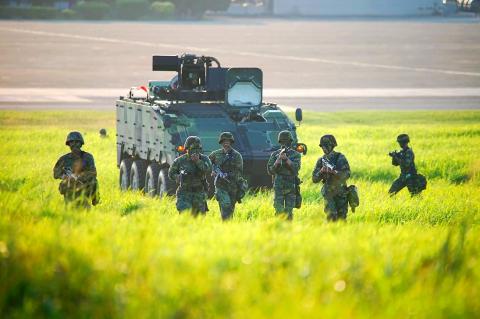
Photo: CNA
Corruption charges were laid against procurement officer Sergeant Major Wang Chien-hsin (王建興) and technician Lee Ti-kuang (李迪光) of the army’s Ordnance Readiness Development Center (ORDC), who allegedly received NT$850,000 and NT$1.17 million respectively in bribes, along with Lee Hsin-jung (林幸蓉), an employee at the Armaments Bureau, for forgery and accounting fraud.
The case stems from a 2012 tender to provide chassis, power equipment and assembly work for the CM-32 armored vehicles, with Chung Hsin Electric securing the project with a bid of NT$4.8 billion, which was well below the stated minimum of NT$7.8 billion.
According to investigators, Chiang colluded with other company owners or executives to forge documents, make deceitful transactions, fake business agreements and other fraudulent accounting practices.
The contractors allegedly bribed military procurement officers and ORDC employees to “go easy” on inspection checks and acceptance tests, while providing substandard components and accessories, most of which came from China.
For example, investigators found that for the armored vehicle’s power system, the contractors imported from China low-price refurbished hydraulic pumps (which cost NT$35,000 per unit, but were listed on record as costing NT$150,000) and steering mechanisms (cost NT$23,000, but recorded as NT$190,000).
Prosecutors said that during the investigation, they uncovered by chance another corruption case involving repair works on M60A3 main battle tanks.
They said that Chiang Tuan Industrial Co is suspected of supplying substandard wheels and metal tread plates from other countries, contravening rules of the tender that the products must be made by Taiwanese companies.
Various problems with the power system and a high breakdown rate have plagued the locally manufactured armored vehicles, prompting suspicions about the use of substandard components and collusion with contractors during the procurement and testing processes.
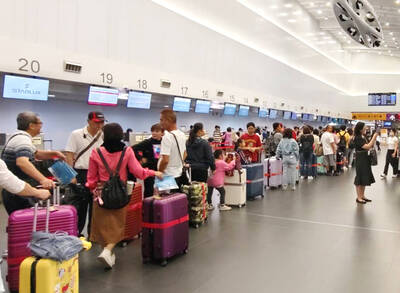
Three Taiwanese airlines have prohibited passengers from packing Bluetooth earbuds and their charger cases in checked luggage. EVA Air and Uni Air said that Bluetooth earbuds and charger cases are categorized as portable electronic devices, which should be switched off if they are placed in checked luggage based on international aviation safety regulations. They must not be in standby or sleep mode. However, as charging would continue when earbuds are placed in the charger cases, which would contravene international aviation regulations, their cases must be carried as hand luggage, they said. Tigerair Taiwan said that earbud charger cases are equipped
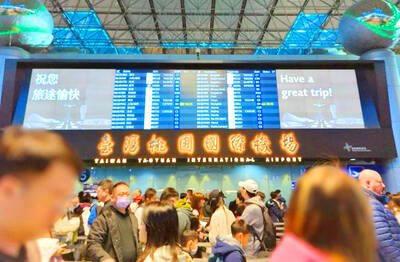
Foreign travelers entering Taiwan on a short layover via Taiwan Taoyuan International Airport are receiving NT$600 gift vouchers from yesterday, the Tourism Administration said, adding that it hopes the incentive would boost tourism consumption at the airport. The program, which allows travelers holding non-Taiwan passports who enter the country during a layover of up to 24 hours to claim a voucher, aims to promote attractions at the airport, the agency said in a statement on Friday. To participate, travelers must sign up on the campaign Web site, the agency said. They can then present their passport and boarding pass for their connecting international
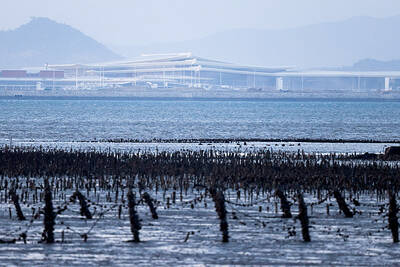
UNILATERAL MOVES: Officials have raised concerns that Beijing could try to exert economic control over Kinmen in a key development plan next year The Civil Aviation Administration (CAA) yesterday said that China has so far failed to provide any information about a new airport expected to open next year that is less than 10km from a Taiwanese airport, raising flight safety concerns. Xiamen Xiangan International Airport is only about 3km at its closest point from the islands in Kinmen County — the scene of on-off fighting during the Cold War — and construction work can be seen and heard clearly from the Taiwan side. In a written statement sent to Reuters, the CAA said that airports close to each other need detailed advanced
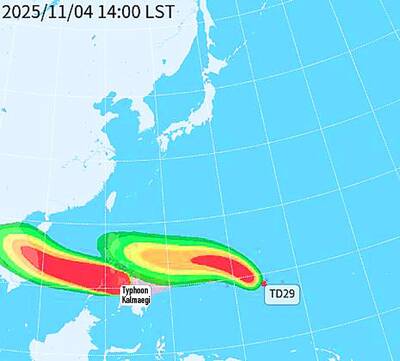
WEATHER Typhoon forming: CWA A tropical depression is expected to form into a typhoon as early as today, the Central Weather Administration (CWA) said yesterday, adding that the storm’s path remains uncertain. Before the weekend, it would move toward the Philippines, the agency said. Some time around Monday next week, it might reach a turning point, either veering north toward waters east of Taiwan or continuing westward across the Philippines, the CWA said. Meanwhile, the eye of Typhoon Kalmaegi was 1,310km south-southeast of Oluanpi (鵝鑾鼻), Taiwan’s southernmost point, as of 2am yesterday, it said. The storm is forecast to move through central